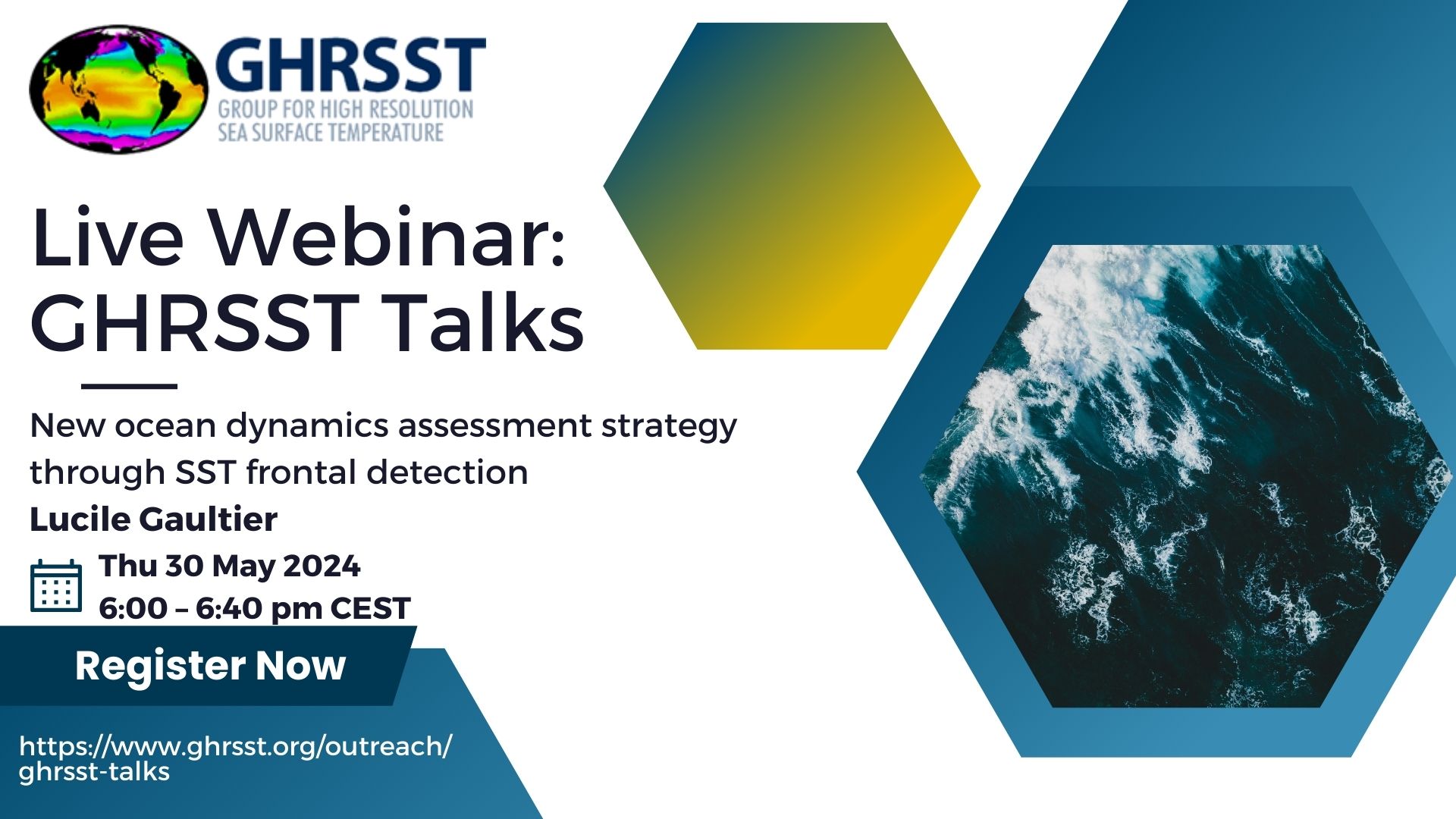Please join us for this GHRSST Talk with Lucile Gaultier on:
New ocean dynamics assessment strategy through SST frontal detection
Authors: Lucile Gaultier, Fabrice Collard, OceanDataLab, 870 route de Deolen, 29280 Locmaria-Plouzané
Abstract
New satellite sensors arose during the past decade, enabling to observe a wide range of oceanic physical variables at various scales. Regarding ocean temperature retrieval, we benefit from very high resolution sensors (S3-SLSTR, VIIRS, MODIS), medium resolution geostationary InfraRed sensors (SEVIRI) and low resolution microwave sensors (AMSR2/GMI). All these observations are complementary and contain important information regarding the upper ocean dynamics at various scales. Thus there is a need to better exploit the wealth of satellite data by considering them as structured information rather than pointwise. In this study, we have built an automatic front detection algorithm from the SST in the upper ocean. This processing relies on the detection of two separated populations and is less sensitive to noise or clouds than gradient. It has been applied successfully on a wide variety of observations (L2/L3/L4). A 10-year database is already available on the WOC website (https://www.worldoceancirculation.org/Products). These SST fronts can then be compared with Ocean surface current derived from observation and model as they reveal Lagrangian Coherent Structures.
In this talk, we will explain the fronts retrieval methodology, and we will then illustrate with examples from the 10 year database. Finally we will demonstrate the interest of using SST fronts to perform ocean surface current assessment. Indeed, they have been used to perform long term ocean surface current assessment within the WOC project and are also operationally used to help with ship routing and compute an optimized current.
Register here.

